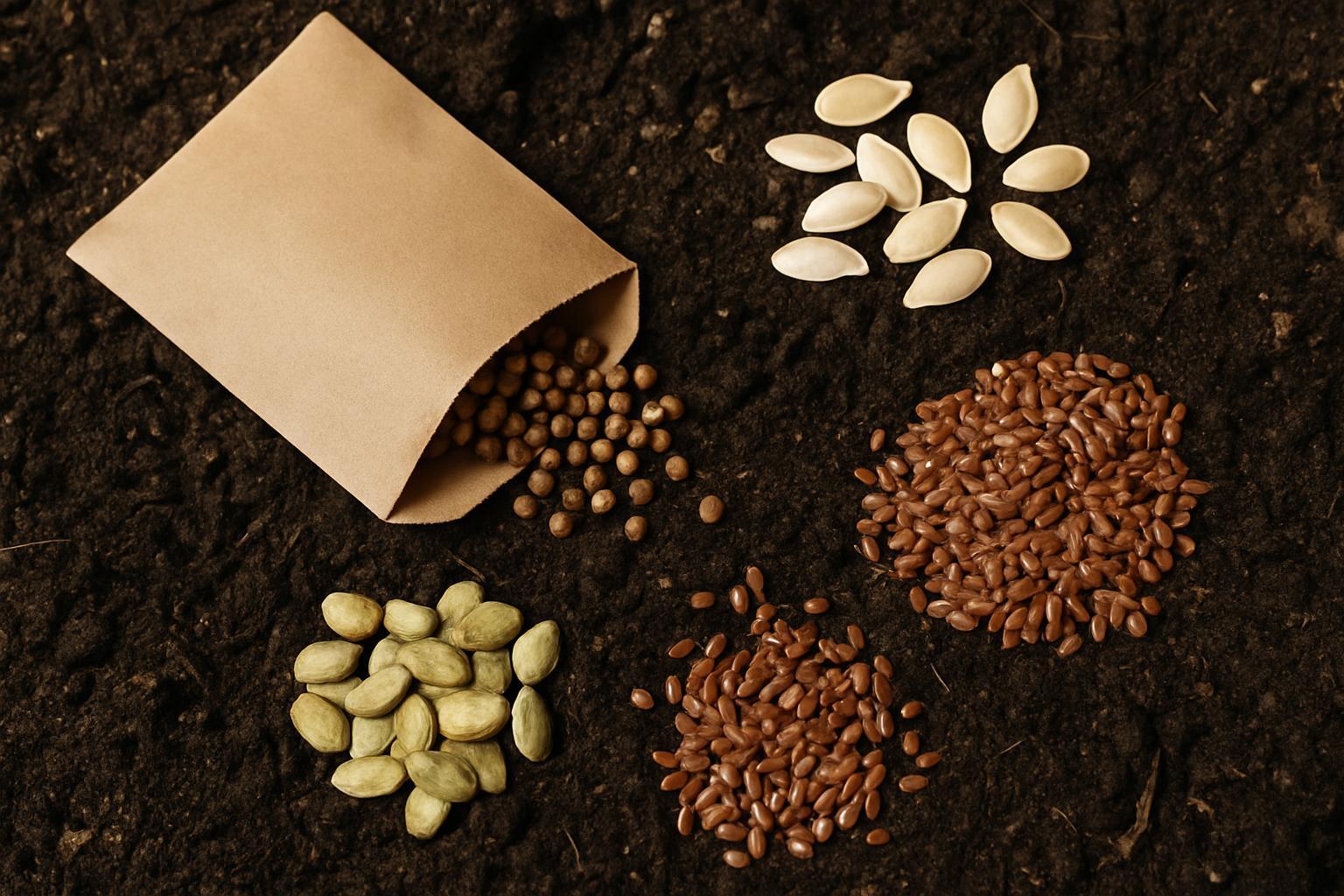Exploring the best-performing field crop seeds during India's monsoon-kissed Kharif season reveals a rich tapestry of choices—each crop thriving under specific climatic and soil conditions. From maize dancing in moisture to pulses offering nutritional gold, understanding their strengths guides farmers toward optimized yield and sustainability.
Why Seed Choice Matters During Kharif
The southwest monsoon, which lasts from June to September, fuels the Kharif season, characterized by high humidity and abundant rainfall. Crop seeds that thrive in environments with inconsistent or wet moisture become popular choices. When selecting varieties, growers must also consider market demand, insect resistance, and soil types. In terms of uniformity and yield potential, modern hybrid and enhanced varieties frequently surpass conventional ones.
Top Contenders in Kharif Field Crops
Maize: A Monsoon Powerhouse
Due to its versatility, maize dominates the Kharif crop in many Indian states, including Karnataka, Bihar, and Odisha. Under the right circumstances, improved hybrids like HM 5, HQPM 1, and Ganga 5 can produce yields of 6 to 8 tons per acre. These hybrids exhibit drought resilience under irregular rainfall patterns and show good resistance to common pests, such as stem borers. The introduction of hybrid maize has led to a 40% increase in maize production growth over the last decade, according to the Directorate of Maize Research.
Paddy (Rice): The Classic Monsoon Crop
Varieties such as PR 126, MTU 1010, and Swarna Sub-1 remain in high demand, making paddy a staple in Kharif cultivation. Sub-1 rice varieties in particular, can withstand submersion for up to two weeks, which is crucial during flash floods in the northeast and east. According to the FAO, these types have experienced yearly yield losses in flood-prone areas of up to 20%. Both lowland and upland cultivars have specific uses; lowland forms thrive in paddies with standing water, while upland ones do best in areas with good drainage.
Pulses: Nitrogen Fixers That Feed Nations
Kharif favourites include mung beans (green gramme), urad (black gramme), and pigeon pea (tur), which contribute nutrients and fertility to the soil. Strong resistance to wilt and sterility mosaic is demonstrated by varieties such UPAS 120 (pigeon pea), ML 2056 (mung), and LBG 685 (urad), which yield 1.5–2 tonnes/ha. They thrive in semi-arid regions because of their deep roots, which assist soils in retaining moisture during unpredictable rainfall.
Oilseeds: Soybean and Groundnut Step Up
High protein and oil content soybeans like JS 335, MACS 124, and PK 472 produce two to three tonnes per hectare. Aflatoxin and white grub resistance are features of groundnut varieties such as TG 37A, JL 24, and BG 94-1, which yield 2.5 tonnes/ha. In central and western India, both crops respond well to monsoon rainfall and fit in well with rotation systems. According to a Ministry of Agriculture data, during the past five years, Madhya Pradesh and Maharashtra have seen a 25% increase in soybean acreage.
Special Mentions: Cotton and Sugarcane
While technically cash crops, cotton and sugarcane also dominate in Kharif landscapes. Varieties such as Bt cotton hybrids show excellent pest resistance and yield potential up to 800–1200 kg lint per hectare. Sugarcane’s long-duration ratoon cropping often starts in Kharif, with varieties like CO 86032 and DCS 09 offering high sugar content and good ratoon performance.
Acquiring Quality Seeds for Kharif Sowing
Seed quality can determine success more than crop choice alone. Improved, certified seeds generally outperform farm-saved ones by 15–20% in yield. Farmers should buy field crop seeds only from reliable suppliers to ensure purity, germination, and improved traits.
Steps to Evaluate and Source Seeds
-
Request laboratory tests for purity, germination percentage, and moisture content.
-
Compare seed treatment and certification labels—look for protected identity marks.
External Resources for Further Reading
For an in-depth understanding of hybrid rice advantages and regional suitability, the International Rice Research Institute (IRRI) offers comprehensive insights. Similarly, the Indian Council of Agricultural Research (ICAR) maintains a dynamic database on Kharif crop varieties and their regional performance.
A Note from the Ground
“Seed is not just a small piece of sowing—it’s the promise of tomorrow’s harvest.”
Unique Words to Enrich Perspective
Considering these vernacular-rich seeds shows how agricultural resilience manifests literally. For example, hydrophyte-tolerant rice offers flood resilience, while nematode-resistant groundnut varieties mitigate soil pests.
By the Numbers: A Snapshot
-
Hybrid maize adoption has boosted production growth by ~40%.
-
Flood-tolerant Sub-1 rice reduces average Kharif yield losses by up to 20%.
-
Soybean cultivation upsurge in major states by 25% in five years.
Frequently Asked Questions
-
What seed traits should a farmer prioritize for monsoon sowing?
Look for drought tolerance, pest resistance, flood tolerance, and fast-growing hybrids that synchronize with monsoon timing.
-
Are traditional seeds completely obsolete?
Not at all—landraces often offer local adaptation and seed saving benefits, but hybrids generally deliver higher yields and consistency.
-
Can crops be mixed in Kharif fields?
Intercropping, like maize with pulses or groundnut with castor, can boost land productivity and improve soil fertility when managed well.
-
Will climate change affect which seeds perform best?
Yes—shift toward shorter-duration, stress-tolerant varieties is rising as monsoon patterns become less predictable.
Take Part in Your Seed Selection Process
Investigating seed substitutes is like painting your agricultural season: colourful, uncertain, and brimming with opportunities. By evaluating the soil, water patterns, microclimate, and market trends in your region, you can create a harvest plan that deviates from the norm.
Check out more blogs: Benefits of Using Bad Boy Tractor Implements on Your Farm



